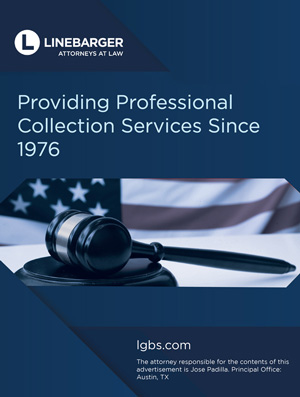NACM and all courts use acronyms and nicknames for all kinds of organizations, agencies, and companies. If you aren’t familiar with this alphabet soup of acronyms, meetings where these abbreviated titles are being used can be confusing to follow. People often won’t even ask for clarification because they are embarrassed that they don’t know what everyone else is talking about.
If this has happened to you, you are not alone! Names of organizations change, groups are added, and organizations come and go regularly. NACM is here to try to help. Below is a partial list and explanation of various court organizations that court managers may encounter during their jobs.
NACM—National Association for Court Management: NACM is a member organization dedicated to educating court professionals, providing community, sharing information, and advocating on important court and justice system topics. www.nacmnet.org
NCSC—National Center for State Courts: The National Center for State Courts promotes the rule of law and improves the administration of justice in state courts and courts around the world. NCSC provides association services (financial, membership, conference planning, etc.) for NACM. www.ncsc.org
ABA—American Bar Association: The American Bar Association serves its attorney members, our profession, and the public by defending liberty and delivering justice as the national representative of the legal profession. www.americanbar.org
AIA—American Institute of Architects: The American Institute of Architects advocates for the value of architecture and gives architects the resources they need to do their best work. AIA offers assistance in courthouse design. www.aia.org
AJA—American Judges Association: The American Judges Association works to promote and improve the effective administration of justice and maintain the status and independence of the judiciary. They provide peer-mentoring opportunities and a variety of platforms and strategies for the exchange of new ideas. www.amjudges.org
AJS—American Judicature Society: The American Judicature Society is an independent, nonpartisan membership organization working nationally to protect the integrity of the American justice system. Its mission is to secure and promote an independent and qualified judiciary and a fair system of justice. https://americanjudicaturesociety.org/
BJA—Bureau of Justice Assistance: BJA, part of the U.S. Department of Justice, strengthens the nation’s criminal justice system and helps America’s state, local, and tribal jurisdictions reduce and prevent crime, reduce recidivism, and promote a fair and safe criminal justice system. BJA focuses its programmatic and policy efforts on providing a wide range of resources, including training and technical assistance, to law enforcement, courts, corrections, treatment, reentry, justice information sharing, and community-based partners to address chronic and emerging criminal justice challenges nationwide. www.bja.ojp.gov
CCJ—Conference of Chief Justices: The Conference of Chief Justices provides an opportunity for the highest judicial officers of the states to meet and discuss matters of importance in improving the administration of justice, rules and methods of procedure, and the organization and operation of state courts and judicial systems, and to make recommendations and bring about improvements on such matters. ccj.ncsc.org/
CCJSCA—Council of Chief Judges of the State Courts of Appeal: The CCJSCA is a vehicle for consultation on court administration, rules and methods of procedure, and the organization and operation of the state courts of appeal. www.ccjsca.org
CCPIO—Conference of Court Public Information Officers: The Conference of Court Public Information Officers is a national membership organization for court communicators serving local, state, and federal courts. www.ccpio.org
CITOC—Court Information Technology Officers Consortium: The Court Information Technology Officers Consortium consists of members who are senior technology staff in courts who provide advice and input on projects for state courts. www.citoc.org
COSCA—Conference of State Court Administrators: The Conference of State Court Administrators is dedicated to the improvement of state court systems. Its membership consists of the state court administrator of each state and territory. https://cosca.ncsc.org/
FCCA—Federal Court Clerks Association: The Federal Court Clerks Association promotes professionalism and integrity of the federal justiciary by increasing proficiency of court employees, supporting the independence of the judiciary, and fostering cooperation between courts and the community. www.fcca.ws
FJC—Federal Judicial Center: Education and research agency for the federal courts. www.fjc.gov
IACA—International Association for Court Administration: The International Association for Court Administration promotes professional court administration and management in emerging democracies and other countries pursuing the rule of law, sponsors international conferences, forums, and education and training programs on court administration and management, and serves as a resource for judges, court administrators and managers, and other government officials in search of ways in which to evaluate and improve court and justice systems. www.iaca.ws
ICM—Institute for Court Management: The Institute for Court Management trains and educates judicial branch personnel in the growing body of knowledge on court leadership and management concepts, case management, human resources management, court performance standards, and other areas deemed critical to professional development. ICM is an entity of the National Center for State Courts. https://www.ncsc.org/education-and-careers/institute-for-court-management
IJIS—IJIS Institute: The IJIS Institute is a nonprofit collaboration network that brings together innovative thinkers from the public and private sectors, national practice associations, and academic/research organizations working together to solve public-sector mission, information-sharing, policy, and technology challenges. www.ijis.org
JTC—Joint Technology Committee: The Joint Technology Committee was established by COSCA, NACM, and NCSC to develop and promote technology standards for the courts; improve court processes and business practices; ensure adequate education and training for court leaders in technology; and collaborate with justice community and other stakeholders. www.ncsc.org/about-us/committees/joint-technology-committee
JMI—Justice Management Institute: The Justice Management Institute is a learning, thinking organization that helps build a better justice system by conducting original research and evaluation. www.jmijustice.org
MAACM—Mid-Atlantic Association for Court Management: The Mid-Atlantic Association for Court Management serves as a regional forum for court management in providing quality-driven continuing education that encourages information sharing and promotes collegial networking. MAACM is one of many state and regional court management associations. www.maacm.org
NADCP—National Association of Drug Court Professionals: The National Association of Drug Court Professionals is a nonprofit organization devoted to furthering the treatment court model and criminal justice reform worldwide. www.nadcp.org
NAPCO—National Association for Presiding Judges and Court Executive Officers: The National Association for Presiding Judges and Court Executive Officers is a professional association of presiding judges, chief executive officers, and court leadership teams dedicated to improving and leading the nation’s state and local courts. www.napco4courtleaders.org
NASJE—National Association of State Judicial Educators: The National Association of State Judicial Educators is a nonprofit organization that strives to improve the justice system through judicial branch education. www.nasje.org
NAWJ—National Association of Women Judges: The National Association of Women Judges promotes the judicial role of protecting the rights of individuals under the rule of law through strong, committed, diverse judicial leadership; fairness and equality in the courts; and equal access to justice. www.nawj.org
NCACC—National Conference of Appellate Court Clerks: The National Conference of Appellate Court Clerks has sought to improve the administration of appellate courts through educational conferences, committee activities, publications, and exchanges between members. www.appellatecourtclerks.org
NCBC—National Conference of Bankruptcy Clerks: The National Conference of Bankruptcy Clerks provides education and advocates for clerks and deputy clerks interested in the bankruptcy community. www.ncbcweb.com
NCJFCJ—National Council of Juvenile and Family Court Judges: The National Council of Juvenile and Family Court Judges is the oldest judicial membership organization in the country and provides all judges, courts, and related agencies involved with juvenile, family, and domestic violence cases with the knowledge and skills to improve the lives of the families and children who seek justice. www.ncjfcj.org
NCPJ–National College of Probate Judges: The National College of Probate Judges is the only national organization exclusively dedicated to improving probate law and probate courts. www.ncpj.org
NCREFC—National Consortium on Racial and Ethnic Fairness in the Courts: The National Consortium is committed to encouraging the highest courts of each state to create commissions to examine the treatment accorded minorities in their courts; sharing the collective knowledge of task forces and commissions with courts, law enforcement, and the community; and providing technical assistance and expertise to commissions, task forces, and other interested organizations and individuals on the subject of racial and ethnic fairness. www.national-consortium.org
NJC—National Judicial College: The National Judicial College is an educational institution that teaches courtroom skills to judges of all types from all over the country, Indian Country, and abroad. www.judges.org
NLADA—National Legal Aid and Defender Association: The National Legal Aid and Defender Association leads a broad network of advocates on the frontlines to advance justice and expand opportunity for all by promoting excellence in the delivery of legal services for people who cannot afford counsel. www.nlada.org
OJJDP—Office of Juvenile Justice and Delinquency Prevention: OJJDP, part of the U.S. Department of Justice, provides national leadership, coordination, and resources to prevent and respond to youth delinquency and victimization. The office helps states, localities, and Tribes develop effective and equitable juvenile justice systems that create safer communities and empower youth to lead productive lives. www.ojjdp.ojp.gov
R2C—Right to Counsel: Right to Counsel is a national campaign to inform and engage policymakers, criminal justice stakeholders, and the community on the importance of meaningfully carrying out the Sixth Amendment. www.rtcnationalcampaign.org
SJI—State Justice Institute: The State Justice Institute awards grants to improve the quality of justice in state courts and foster innovative, efficient solutions to common issues faces by all courts. www.sji.gov
SRLN—Self-Represented Litigation Network: The Self-Represented Litigation Network connects lawyers, judges, and allied professionals who are creating innovative and evidence-based solutions so that self-represented litigants have meaningful access to the courts and get the legal help they need. www.srln.org
This is, by no means, an exhaustive list of every organization. These were just the most used acronyms for organizations that we hear regularly. Many of these organizations are specialized, and many courts may never refer to them depending on their subject-matter jurisdiction, but we wanted you to be familiar with them for future reference.
ABOUT THE AUTHOR
Dawn Palermo is judicial administrator, Jefferson Parish Juvenile Court, Harvey, Louisiana. She serves on the NACM Board of Directors and is co-editor of Court Manager.



